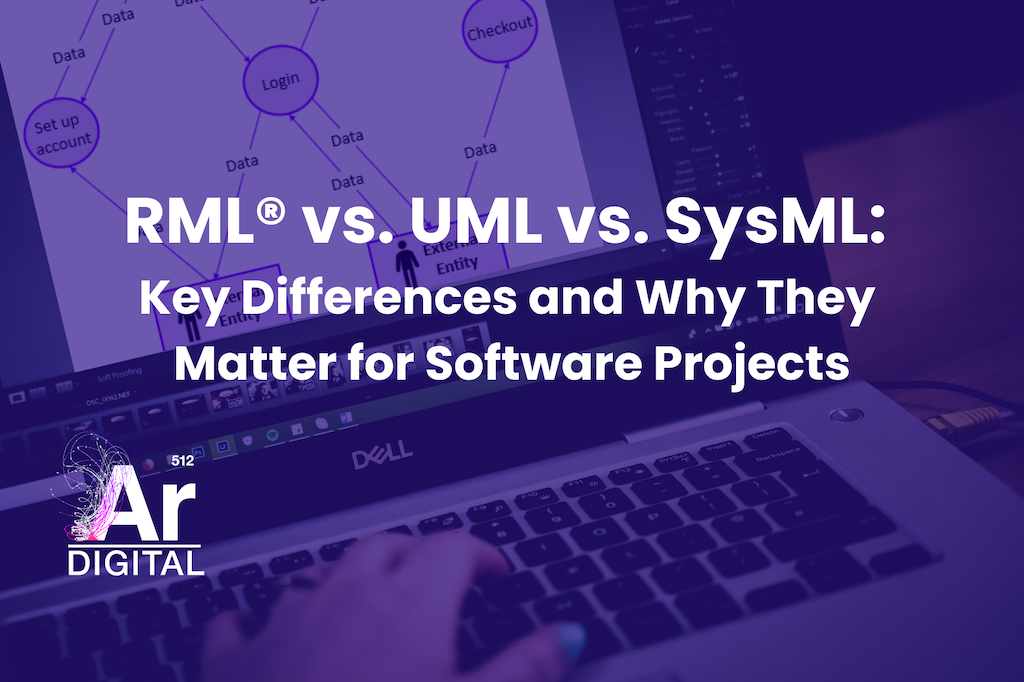Modeling Languages Help Analysts, Designers and Developers Design and Build Complext Software Systems
In today’s fast-paced software world, how do teams translate complex business goals into actionable technical models? With so many modeling languages—like UML®, SysML, and RML®—knowing which one to use and when can make all the difference. Whether you’re a product manager, business analyst, or software developer, selecting the right modeling language can streamline your workflow and ensure the success of your project.
What Is RML® and How Is It Different?
The founders of ArgonDigital invented Requirements Modeling Language (RML®) to create and define software requirements visual models. RML® approaches software from the business analysis or product management perspective and focuses on specifying needs, rather than the solution designs like UML and SysML do. Instead of focusing intensely on complex system design models, RML® looks at a project’s goals and objectives. RML® then uses models to break down these objectives into requirements which are easily understood by both business stakeholders and developers. By focusing on objectives instead of system design, RML® forces teams to hone in on designing systems which maximize value to a project
- RML®: Understood by business stakeholders, testers, and developers, making it versatile across different teams.
- UML®: Primarily understood by developers and testers but less usable to business teams.
- SysML: Similar to UML®, with a focus on developers and engineers rather than business stakeholders.
Key takeaway:
RML® is more inclusive for non-technical stakeholders, while UML® and SysML are more technical in nature.
Key Differences Between RML®, UML®, and SysML
Two widely used modeling languages are Unified Modeling Language (UML®) and Systems Modeling Language (SysML).
UML and SysML are very useful modeling languages for designing and developing systems, of course. The RML® models actually can be used as a starting point for many of the models within UML and SysML.
- RML®: Strongly aligns with business goals and includes KPIs to track success, ensuring alignment with strategic objectives.
- UML® and SysML: Do not emphasize KPIs or direct business objectives; instead, they focus on system and technical designs.
Key takeaway:
RML® is more goal-oriented and business-focused, while UML® and SysML are better suited for technical design and development.

How RML® Complements UML® and SysML
- RML®: Focuses on requirements gathering and product objectives, driving clarity in what the project needs to achieve.
- UML®: Concentrates on software design and system workflows.
- SysML: Expands beyond software to visualize system architectures, including hardware and engineering components.
Key takeaway:
RML®’s strength lies in aligning projects with business objectives, while UML® and SysML focus more on technical design and development workflows.
What Makes Us Experts?
We created Requirements Modeling Language (RML) and wrote the book(s) – literally. Let us know how we can help you build the right thing the first time.




